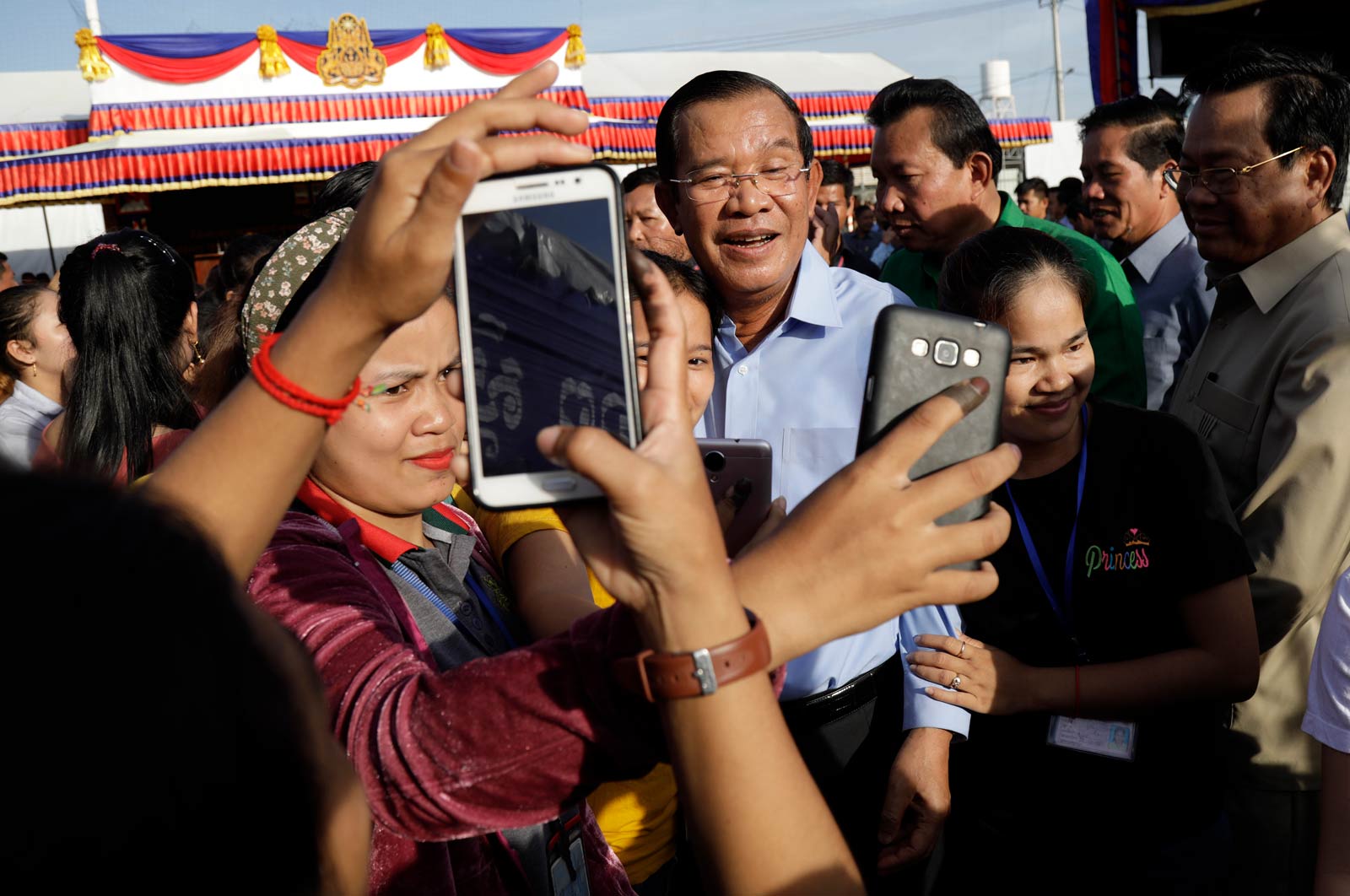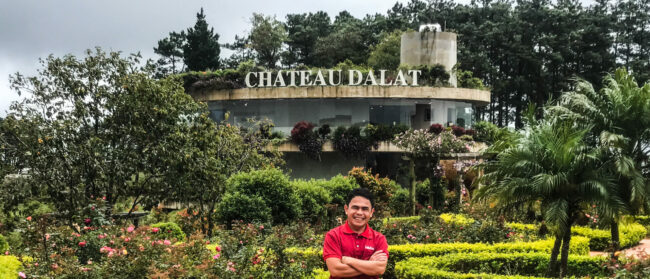With no end in sight to the so-called trade war raging between the US and China, the European Union (EU) sees a chance to act as the guardian of free trade and hold its own against the two giants. But as the bloc gets increasingly bogged down in spats with individual Southeast Asian countries, prospects for a wider regional trade relationship look increasingly precarious.
With Cambodia’s eligibility for preferential market access to the EU coming under question and with the likelihood growing that Myanmar could be put under similar scrutiny, the EU appears to be hedging against any consequent damage to its relations with Southeast Asia by seeking free trade agreements and closer defence ties with some of the region’s countries.
While for now Cambodia can export duty-free to the 28-country, 513 million-population European Union market, this week saw the end of the “monitoring and engagement” phase of a review of that access, potentially putting $5 billion worth of Cambodian garment exports at risk.
A European Commission spokesperson said in an August 12 email that “over the next six months, the Commission and the European External Action Service will analyse all the evidence collected”.
“This will inform the final decision on whether or not to withdraw preferences,” the spokesperson concluded.
Cambodia might not be the only one in the firing line. The odds that Myanmar’s EBA status could also be scrutinised by the EU went up in the wake of an August 5 United Nations report suggesting that some of Myanmar’s biggest businesses be sanctioned over links to the army’s driving of hundreds of thousands of Rohingya into neighbouring Bangladesh through scorched-earth reprisals for guerilla attacks on border posts. The Myanmar government and military had previously been accused by the UN of genocide in Rakhine State in the country’s northwest.
“Over the last eighteen months, we have seen the deterioration of democracy, respect for human rights and the rule of law in Cambodia”
Federica Mogherini, high representative of the EU for Foreign Affairs and Security Policy and vice president of the EU Commission

Both countries’ EU tax-free market access is based on the Everything But Arms scheme, which, according to the European Commission, covers “all the States classified by the United Nations as Least Developed Countries (LDCs).”
As the name suggests, EBA takes in all trade bar arms and ammunition, but can be challenged on political or human rights-based grounds. Cambodia’s EBA status was placed under review in February, after the judicial dismantling of the opposition Cambodia National Rescue Party and the holding of one-horse parliamentary elections in mid-2018, in which the long-ruling Cambodian People’s Party won all 125 seats going.
Announcing the appraisal, the EU’s de facto foreign affairs chief Federica Mogherini said that “over the last eighteen months, we have seen the deterioration of democracy, respect for human rights and the rule of law in Cambodia” – a regression that “calls Cambodia’s participation in the EBA scheme into question”.
While Cambodia’s economy has grown strongly in recent years on the back of increased Chinese investment, its trade largely depends on Western countries and Japan. In 2018, Cambodia’s exports to the EU amounted to around US$5.5 billion – an amount equivalent to around a fifth of Cambodia’s gross domestic product.
Most of those exports come under the EBA remit, so it was no surprise when earlier this year the Cambodian and European Chambers of Commerce wrote of their “deepest concerns” at the prospect of the trade preferences being suspended – an outcome that could jeopardise the jobs of around 750,000 garment sector workers, according to the chambers’ joint letter, which was addressed to the EU’s trade chief Cecilia Malmström.
Eurocham went on to say in an August 12 submission to the European Commission that a “complete suspension of the EBA” would amount to an “existential threat” to the garment sector.
Whether or not the EU actually cancels Cambodia’s lucrative market access remains to be seen. Mogherini met Cambodian counterpart Prak Sokhonn in Bangkok in early August and had what EU official David Daly described on Twitter as a “good meeting” that took in “very sensitive issues”.
The ongoing EBA review, which will take until February 2020 to be concluded, will then entail a further six-month period before any change is implemented – potentially giving Cambodia a window to have any cancellation of access rescinded.
At odds
The EU’s increasingly tense relations with Cambodia and Myanmar have echoes elsewhere in the Association of Southeast Asian Nations (ASEAN), the ten-country regional bloc with which the EU would like to have a region-wide free trade deal.
“Palm oil is not just an economic issue for Indonesia and Malaysia – it is much more than that”
Rahul Mishra, Asia-Europe Institute
The EU is already at loggerheads with two other Southeast Asian governments over plans to restrict imports of palm oil, with Indonesia and Malaysia, by far the world’s two biggest suppliers, threatening to increase duties on imports from Europe even as Indonesia and the EU continue talks over a possible free trade deal.
“If we don’t react to this issue, other countries will follow [the EU’s ruling],” Indonesian President Joko Widodo said after meeting Malaysian Prime Minister Mahathir Mohamad on 8 August.

“Palm oil is not just an economic issue for Indonesia and Malaysia – it is much more than that,” said Rahul Mishra of the Asia-Europe Institute at the University of Malaya. “It involves the livelihood of a sizable number of population in these countries – and thus impacts the domestic politics in a big way.”
In the meantime, as bilateral disputes simmer, it appears that wider trade and investment talks are central to the EU’s attempts to shore up relations with Southeast Asia.
Discussing the EU’s recent free trade deals with Singapore and Vietnam, Mogherini told ASEAN foreign ministers in Bangkok on 1 August that “our future lies in a region-to-region trade agreement”.
Vivian Balakrishnan, the foreign minister of Singapore, Southeast Asia’s trade and investment hub, backed the call.
“We hope there will be a speedy conclusion to these negotiations, which will boost our people and business,” he said.
However, that potentially huge trade pact remains a somewhat distant prospect as the EU and Indonesia, the region’s biggest country, work through multiple rounds of talks over their standalone deal.
“No EU-ASEAN deal will happen until the main building blocks are in place, particularly including the agreement with Indonesia,” said Deborah Elms, executive director of the Asian Trade Center.
To some, the EU’s hopes for a free trade agreement (FTA) with ASEAN could stumble over protectionism within the EU, particularly the EU’s mammoth Common Agricultural Policy (CAP), which in 2018 provided provided 41.74 billion euros (US$46.7 billion) in income support to tens of millions of European farmers.
“ASEAN..[is]..not yet ready for an inter-regional free trade agreement. EU’s CAP, which promotes protectionism through other means, would be a major obstacle for an FTA between the two regional groupings,” said Rahul Mishra.
Meanwhile, talks with the Philippines, the second largest Southeast Asian country, have also taken a turn for the worse. An April 2018 European Parliament resolution called on the European Commission to “initiate the procedural steps which could result in the temporary withdrawal” of the Philippines’ preferential market access to the EU, with the resolution based on concerns over the so-called “War on Drugs” in the Philippines and allegations of thousands of extrajudicial killings of suspects by police.
But the European Commission is not always so quick to judge governments accused of widespread human rights abuses. Mogherini followed up her meetings in Bangkok with a visit to Hanoi, where she met Vietnam’s defence and foreign ministers on 5 August. There, she backed the government in its increasingly tense stand-off with China over the disputed South China Sea, where China’s expansive claims and building of heavily armed artificial islands impinge on claims made by littoral countries such as the Philippines and Vietnam.

Pledging closer security ties with Vietnam, Mogherini said at a joint press conference in Hanoi that the EU “fully shares your positions and your concerns when it comes to the situation and the increasing tensions in the South China Sea”.
“We believe that these tensions and this militarisation is definitely not conducive to a peaceful environment,” she added – comments that were implicitly critical of China, which has been accused by the US of “militarisation” of the South China Sea.
The tighter relations with Vietnam appear at odds with other aspects of EU’s Southeast Asia policy. Even as it tries to build better all-round ties with the region, the enhanced trade and defence relations with Vietnam arguably look out of place in the light of the EU’s rights-based scrutiny of Cambodia’s trade arrangements, given that Vietnam’s Communist Party has brooked no opposition since taking control of the country over four decades ago and has jailed hundreds of critics in recent years.
Trading places
The EU’s latest round of engagements with Southeast Asia comes as the US and China remain embroiled in an increasingly acrimonious trade stand-off and as geopolitical rivalry grows between the two rivals. And despite the US’ decision yesterday to push further tariff hikes on a number of consumer goods until December, the trade war continues to take a toll.
“Both the EU and ASEAN can rightfully be seen as supporters and promoters of the rules-based global trading and economic order”
Chris Humphrey, executive director of the Singapore-based EU-ASEAN Business Council
The US and Japan have promoted the idea of the “Indo-Pacific” – a vast regional grouping taking in India and seemingly intended as a counterweight to China. ASEAN will likely shun taking sides, however, mentioning in a recent “outlook” statement on the Indo-Pacific that it wants to avoid any “zero-sum game” and to “continue being an honest broker within the strategic environment of competing interests”.
“We will need clear-eyed realism and acute situational awareness to navigate in the rapidly changing geopolitical landscape,” Balakrishnan said during the recent ASEAN foreign ministers gathering in Bangkok. “As a group, ASEAN must maintain its strategic autonomy”
The EU likely sees an opportunity, therefore, to boost its overall standing in Southeast Asia – even as tensions rise with individual countries over issues such as the EBA agreement and palm oil.
While the EU-ASEAN free trade plans pre-date the Trump administration and the so-called trade war between the US and China, by negotiating FTAs as the US rails against globalisation, the EU possibly sees an opening to put itself out there as a third party distinct from the two sparring giants – and therefore help ASEAN cling to the autonomy Balakrishnan referred to.
“Both the EU and ASEAN can rightfully be seen as supporters and promoters of the rules-based global trading and economic order,” said Chris Humphrey, executive director of the Singapore-based EU-ASEAN Business Council. “Implementing the Singapore and Vietnam FTAs sends an important message that both regions want to develop their trade and investment links further.”
“You can say that the EU FTAs are more important than ever at a time of escalating trade tensions or that they matter more to firms in a world of increasing risk and uncertainty,” said the Asian Trade Centre’s Deborah Elms.
The EU moreover likely wants to hedge against its own vulnerability to the spiralling trade war, with a May report by S&P Global Ratings assessing that “the indirect effects” of the trade war “could be more detrimental” in Europe than on the two principal antagonists – “not least because it is increasingly dependent on trade, unlike China, and much more dependent than the US”.
Raising the stakes for the EU, US President Donald Trump criticised European governments over plans to tax American businesses and has threatened increased retaliatory duties on European exports to the US.

In March 2018, in comments he has echoed several times since, Trump lashed out at the bloc on Twitter.
“If the EU wants to further increase their already massive tariffs and barriers on US companies doing business there, we will simply apply a Tax on their Cars which freely pour into the US,” he tweeted. “They make it impossible for our cars (and more) to sell there.”
Backyard battles
As the EU tries to make trade and diplomatic inroads into China’s Southeast Asian neighbourhood, it is at the same time assessing the headway made by China into its own backyard at a time when it is struggling with the prospect of its second-biggest member-state economy, the UK, leaving the bloc in a crash-out scenario.
Several eastern European countries and Italy, a member of the Group of 7 countries, have ignored warnings from neighbours in Western Europe and from the US to steer clear of China’s Belt and Road Initiative, an expansive array of China-centred road, rail and port projects which could take in 60 countries spanning Asia, Europe and Africa.
The US has also ratcheted up pressure on its European allies to shun Chinese tech companies such as Huawei, which the US has attempted to blacklist as a security threat, citing Chinese laws that oblige companies to share information with authorities upon request.
However, Europe in general has swerved taking sides on the Huawei issue – much like Southeast Asia, where the US’ efforts to denounce the company are arguably seen as little more than a belated attempt to pre-empt China taking the lead on the rollout of potentially revolutionary 5G mobile networks.
Even as Europe tries to avoid looking like it is being strong-armed by the US over Huawei, Chinese investment in Europe has dipped in the past two years – in part because the EU has introduced tighter screening of foreign investment. According to a March report by the Berlin-based Mercator Institute for China Studies, “the combined value of completed Chinese FDI transactions in the EU fell to 17.3 billion euros (US$19.37 billion) in 2018, down 40% from 2017 levels” – a drop to “the lowest investment level since 2014″.
All the same, even before Italy signed up to China’s vast infrastructure plans, the European Commission published a blueprint that talked up how the EU could improve infrastructure links across the vast Eurasian landmass – echoing in part what China had been proposing since 2013 as part of the BRI.
It was quickly noticed that The European Way to Connectivity, as the blueprint was titled, did not set out how this “connectivity” would be funded – a haziness that perhaps echoes some of the apparent contradictions of the EU’s Southeast Asia policy.
The European Economic and Social Committee, a kind of in-house EU think-tank made up of civil society groups, stated its “concern” with what it perceived as “strategic gaps”.
The document, the EESC said, lacked the necessary “vision” as well as any “firm indication of the EU’s strategic objectives.”
To many, the roughly sketched plan was taken as a kind of opening shot in the EU’s attempts to push back against the BRI and China’s growing influence in Europe – an accompaniment to the EU’s attempts to increase trade with China’s Southeast Asian neighbours and back the likes of Vietnam in its territorial disputes with China.
“Our proposals, our policies and our calendar are not determined elsewhere,” Mogherini said, rebuffing claims that the plan was aimed at China.



